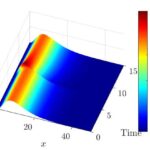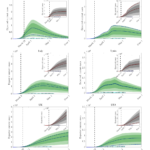 G. Dimarco, B. Perthame, G. Toscani, M. Zanella
G. Dimarco, B. Perthame, G. Toscani, M. Zanella
Journal of Mathematical Biology, 83, 4, 2021. (Preprint arXiv)
We introduce a mathematical description of the impact of sociality in the spread of infectious diseases by integrating an epidemiological dynamics with a kinetic modeling of population-based contacts. The kinetic description leads to study the evolution over time of Boltzmann-type equa- tions describing the number densities of social contacts of susceptible, infected and recovered indi- viduals, whose proportions are driven by a classical SIR-type compartmental model in epidemiology. Explicit calculations show that the spread of the disease is closely related to moments of the con- tact distribution. Furthermore, the kinetic model allows to clarify how a selective control can be assumed to achieve a minimal lockdown strategy by only reducing individuals undergoing a very large number of daily contacts. We conduct numerical simulations which confirm the ability of the model to describe different phenomena characteristic of the rapid spread of an epidemic. Motiv- ated by the COVID-19 pandemic, a last part is dedicated to fit numerical solutions of the proposed model with infection data coming from different European countries.
 G. Albi, L. Pareschi, M. Zanella
G. Albi, L. Pareschi, M. Zanella G. Albi, L. Pareschi, M. Zanella
G. Albi, L. Pareschi, M. Zanella